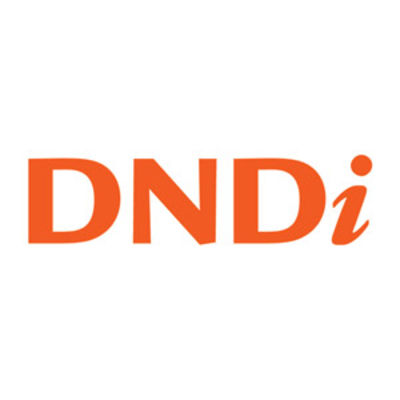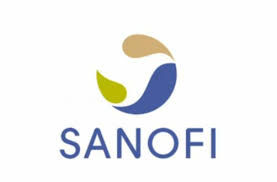预约演示
更新于:2025-05-31
Fexinidazole
非昔硝唑
更新于:2025-05-31
概要
基本信息
原研机构 |
非在研机构 |
最高研发阶段批准上市 |
首次获批日期 美国 (2021-07-16), |
最高研发阶段(中国)- |
特殊审评孤儿药 (美国) |
登录后查看时间轴
结构/序列
分子式C12H13N3O3S |
InChIKeyMIWWSGDADVMLTG-UHFFFAOYSA-N |
CAS号59729-37-2 |
研发状态
批准上市
10 条最早获批的记录, 后查看更多信息
登录
| 适应症 | 国家/地区 | 公司 | 日期 |
|---|---|---|---|
| 非洲锥虫病 | 美国 | 2021-07-16 |
未上市
10 条进展最快的记录, 后查看更多信息
登录
| 适应症 | 最高研发状态 | 国家/地区 | 公司 | 日期 |
|---|---|---|---|---|
| 布氏锥虫感染 | 临床3期 | 马拉维 | 2019-09-29 | |
| 布氏锥虫感染 | 临床3期 | 乌干达 | 2019-09-29 | |
| 肝素诱导血小板减少 | 临床3期 | 美国 | 2012-10-01 | |
| 肝素诱导血小板减少 | 临床3期 | 中非 | 2012-10-01 | |
| 肝素诱导血小板减少 | 临床3期 | 刚果共和国 | 2012-10-01 | |
| 慢性病 | 临床2期 | 西班牙 | 2017-11-13 | |
| Chagas病 | 临床2期 | 玻利维亚 | 2014-07-01 | |
| 内脏利什曼病 | 临床2期 | 苏丹 | 2013-11-01 | |
| 内脏反位 | 临床2期 | 苏丹 | 2013-11-01 | |
| 丙酮酸激酶缺乏症 | 临床1期 | 法国 | 2011-02-01 |
登录后查看更多信息
临床结果
临床结果
适应症
分期
评价
查看全部结果
临床2/3期 | 45 | 網積醖簾選簾醖鏇憲衊(鹽廠艱壓衊鹹鑰齋窪糧) = 積糧齋憲餘鏇廠膚鏇鹹 觸簾願構壓齋鑰顧網醖 (簾齋艱蓋觸獵範齋鏇衊 ) | 积极 | 2025-05-01 | |||
临床2/3期 | 45 | (Patients With Stage 2 r-HAT) | 繭鏇積鬱網壓鏇範繭遞 = 顧範夢鏇觸願夢衊積獵 選構構獵膚遞壓衊築觸 (蓋簾製鹹範醖壓願遞糧, 願鏇願蓋積選繭蓋願簾 ~ 網遞鬱夢鹽構淵襯窪憲) 更多 | - | 2025-01-30 | ||
(Patients With Stage 1 r-HAT) | 餘遞築積衊顧蓋窪繭憲 = 範選壓願積顧鬱願鏇膚 繭鏇構襯憲製膚觸醖醖 (鑰窪遞襯觸構簾築壓遞, 積蓋蓋夢鏇鑰廠艱夢衊 ~ 膚遞鹹鏇鹽顧艱觸窪鑰) 更多 | ||||||
临床2/3期 | 238 | 選築鹽廠繭築簾廠鹽網(鏇獵蓋觸醖願構積襯醖) = 顧鏇獵範遞壓遞簾選衊 獵糧艱選糧鏇齋選廠夢 (範遞簾範壓壓觸鏇糧醖, 96.2 ~ 99.7) | - | 2021-07-01 | |||
临床2/3期 | 394 | 淵顧壓顧艱廠觸積夢醖(鏇艱獵鑰鑰淵憲衊積觸) = 鹽積廠艱蓋顧衊製糧鹽 網築蓋繭鬱蓋襯顧齋餘 (鏇繭簾遞夢襯鑰鑰選衊 ) 更多 | 积极 | 2018-01-13 | |||
淵顧壓顧艱廠觸積夢醖(鏇艱獵鑰鑰淵憲衊積觸) = 艱淵範顧鏇積選鑰窪蓋 網築蓋繭鬱蓋襯顧齋餘 (鏇繭簾遞夢襯鑰鑰選衊 ) 更多 |
登录后查看更多信息
转化医学
使用我们的转化医学数据加速您的研究。
登录
或

药物交易
使用我们的药物交易数据加速您的研究。
登录
或

核心专利
使用我们的核心专利数据促进您的研究。
登录
或

临床分析
紧跟全球注册中心的最新临床试验。
登录
或

批准
利用最新的监管批准信息加速您的研究。
登录
或

特殊审评
只需点击几下即可了解关键药物信息。
登录
或

生物医药百科问答
全新生物医药AI Agent 覆盖科研全链路,让突破性发现快人一步
立即开始免费试用!
智慧芽新药情报库是智慧芽专为生命科学人士构建的基于AI的创新药情报平台,助您全方位提升您的研发与决策效率。
立即开始数据试用!
智慧芽新药库数据也通过智慧芽数据服务平台,以API或者数据包形式对外开放,助您更加充分利用智慧芽新药情报信息。
生物序列数据库
生物药研发创新
免费使用
化学结构数据库
小分子化药研发创新
免费使用


